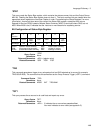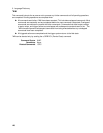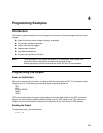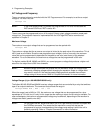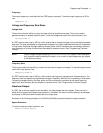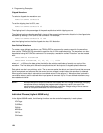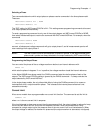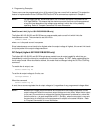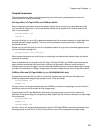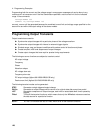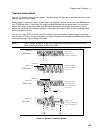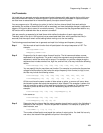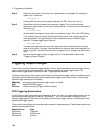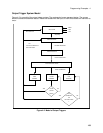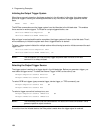Programming Examples - 4
127
Coupled Commands
This section describes how to avoid programming errors that may be caused because of the error
checking done for coupled commands.
VOLTage:LEVel, VOLTage:OFFSet, and FUNCtion:SHAPe
When using these commands, assume the present state of the ac source has ac amplitude set to 240
volts rms and dc offset set to 0, and a new state is desired with ac amplitude of 0 and dc offset of 300
volts. If the commands
VOLTage:OFFSet 300
VOLTage 0
are sent individually, an error will be generated because the first command requests an output state that
exceeds the peak voltage capability. The error can be avoided by reversing the order in which the
commands are sent.
Another way to avoid this type of error with coupled commands is to give the commands together as part
of one terminated message as in
VOLTage:OFFSet 300;:VOLTage 0
When coupled commands are sent this way, the couplings are deferred and resolved when the newline
terminator is received.
Other commands that are coupled to the VOLTage, VOLTage:OFFSet, and SHAPe commands are the
output transient commands that control step, pulse and list generation. When an output transient is
initiated (ready to receive a trigger), the error checking that takes place for maximum peak output voltage
includes any combination of voltage, voltage offset, or function shape that can occur during the transient.
CURRent:LEVel and VOLTage:RANGe (Agilent 6814B/6834B/6843A only)
Programming the current limit by itself to a value that is greater than the maximum allowed on the
presently programmed voltage range causes an error. If the commands
VOLTage:RANGe 300
CURRent 10
are sent, an error will be generated because the CURRent command is requesting a current limit that is
outside the maximum value allowed on that voltage range.
Programming the VOLTage:RANGe by itself causes the programmed current limit to be set to the
maximum for the given range if it had previously been higher than the maximum setting for the new range.
If the commands
VOLTage:RANGe 150
CURRent 10
VOLTage:RANGe 300
are sent, no error will be generated because the second VOLTage:RANGe command automatically sets
the programmed current limit to 5, which is the maximum value for the programmed voltage range.



